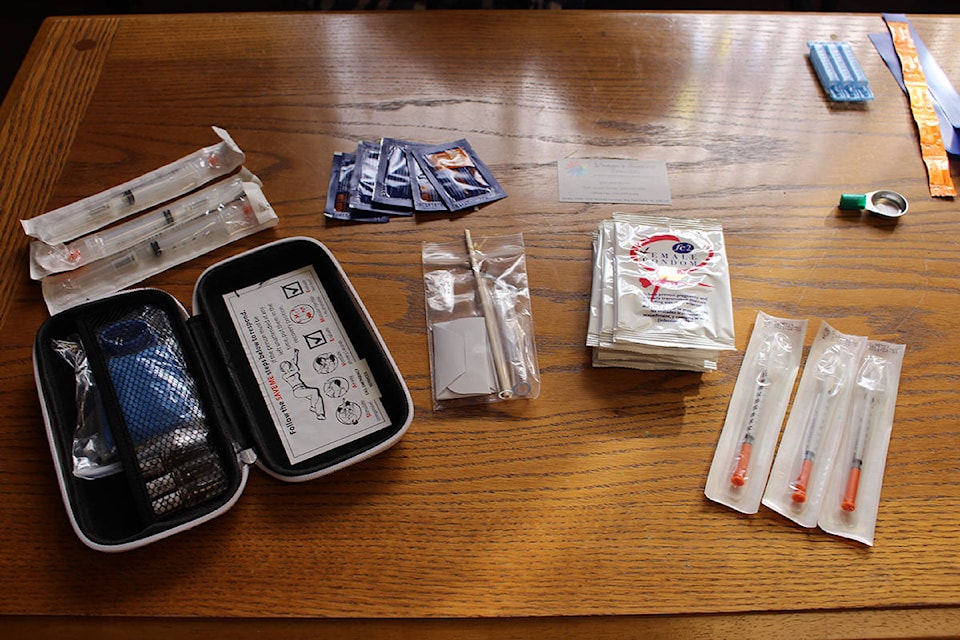An Aug. 22 BC Coroners Service report estimated a staggering 3.5 deaths per day from illicit drug-use last June, totalling 105 deaths at the end of the month.
The report also states that 81 per cent of the overdoses are linked to fentanyl-laced illicit drugs, and the number of fatal overdoses province-wide were at an all time high, continuing to grow from 601 deaths since January.
According to the report, 80 per cent of those who overdosed from illicit drug-use were male, and a majority of overdoses occur within a home residence.
Executive Director Cheryl Zaw at North Island Crisis & Counselling Centre suggested the high rates of fatality among men may be a result of isolation stemming from addiction. According to Zaw, men are more likely to consume illicit drugs alone within a residence with no one nearby to call emergency services.
But what about locally?
Services across the North Island are tackling the issue in a variety of ways.
Zaw, who’s worked extensively in the downtown eastside, Edmonton in the River Valley and the Northwest Territories, noted that “overdoses are less common here … less than what you see in the cities. There’s less likelihood of fentanyl here. One of the scary things is that they go to another community (and) they are a lot less cautious.”
She said that because illicit drug users aren’t taking as many precautions in other towns or cities, they may be unsuspectingly bringing drugs back that are cut with fentanyl.
Vancouver Island had 138 fatal overdoses over the span of a decade alone, according to Health Authority. It continues to have one of the highest rates of fatal overdoses due to illicit drugs.
In 2017, North Vancouver Island (Comox-North) went through 37 overdoses. In this year alone, fentanyl-laced drugs have claimed 17 lives already within the region.
The numbers seem to worsen when looking to the southern parts of the island, almost doubling and tripling in numbers when moving closer to the two major cities, Nanaimo and Victoria.
Island Health’s Summer 2018 magazine explains some issues the agency is addressing. “It’s important to recognize that … stigma comes from the system as a whole, rather than from individual care providers,” states the magazine. “It’s clear that stigma is still a barrier and that existing services often fall short of meeting the needs of people who use drugs. People who use drugs often delay or avoid accessing health care when they experience health problems for fear of being judged.”
Impact on First Nations’ Communities
“10 per cent of all overdose deaths in BC were First Nations people,” First Nations Health Authority (FNHA) found in a recent study.
The overdose statistics report also states that “among First Nations people who overdose, men were approximately 2.5 times more likely to die than women.”
Indigenous persons far exceeded deaths caused by overdose than the non-Aboriginal population across all BC regions.
“First Nations people are three times more likely to die due to an overdose than non-First Nations,” according to the findings.
60 Indigenous persons across BC fatally overdosed between Jan. 2018 to July 2018. Sacred Wolf Friendship Centre’s Executive Director Janet Hanuse had this to say: “It is undeniable that there are a number of people directly impacted by overdose, substance use and abuse.”
“A continuing challenge that we face with awareness,” she said, “is that stigma continues to impede our ability to respond effectively and proactively.”
Sacred Wolf is currently one of the co-host agencies for the upcoming Harm Reduction Conference. The conference will “bring awareness of the opioid crisis as well as … look at how and where to fit harm reduction into our work and into our lives,” added Hanuse.
The conference is scheduled for February 2019.
The Health Authority concluded in its report that “[t]here were no deaths at supervised consumption or drug overdose prevention sites.”
Zaw confirms that “If there are people using drugs at risk of overdose, there will be mechanisms in place to ensure they’re safe. As soon as a group of social workers or medical (groups) build a relationship with someone who uses and they know they are using dangerous substances, people find ways to help those they care about.”
Aug. 31 of every year is International Overdose Awareness Day and was first started by the Salvation Army in hopes of raising awareness and supporting illicit drug harm reduction.
The local crisis continues to be a growing problem for service providers, but the questions still remain.
What is the root cause and what are some new harm reduction strategies that could be used to address the issue?
- Thomas Kervin article
